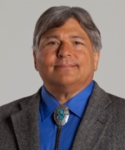During the fall of 2011, I was selected to participate in the civic leader fellowship program put on by the Flinn-Brown Foundation. Not having aspirations for political office, I channeled my knowledge of healthcare with my passion for telehealth and jumped in headlong to fulfill the requirements of the program.
Each graduating fellow was charged with the responsibility to develop a common good project that served the citizens of Arizona. Each graduate was also assigned a mentor to help us on our journey. My mentor, Bob Smoldt, is the Chief Administrative Officer Emeritus for Mayo Clinic, Director of the ASU Healthcare Delivery and Policy Program and a great guy.
During initial meeting, I pitched Bob on different ideas that would improve healthcare delivery using telehealth technology. We reviewed existing barriers and quickly realized that to have the biggest impact, we needed a louder single-voice and some additional support. Bob solicited the help of Deni Cortese, Chief Executive Officer and President of Mayo Clinic, and Natalie Landman, PhD Associate Director for Projects at the ASU Healthcare Delivery and Policy Program (HCDPP).
Collectively, we decided to produce a barrier mitigation telemedicine white paper.
We invited key Arizona telemedicine stakeholders to participate in a forum where common thread barriers and consensus on mitigations were consolidated into a single-voice call for action.
Forum participants included telemedicine leaders from UnitedHealthcare, Banner Health, Carondelet Health Network, Dignity Health, Flagstaff Medical Center, Mayo Clinic, North Country Healthcare, and the University of Arizona-headquartered Arizona Telemedicine Program.
Identifying the Tipping Point Barriers
The forum participants distilled tipping point barriers into four categorical buckets:
- Legal/Regulatory
- Financial
- Technical
- Cultural
Among the barriers identified, participants acknowledged that financial and cultural factors are present, but diminishing. It’s quicker, cheaper and faster technology that’s driving expanded acceptance and adoption.
Participants also agreed current legal and regulatory barriers top the list.
Telemedicine’s Top Barrier to Growth
In the whitepaper we identified Medicare and Medicaid rules as the principal source inhibiting telemedicine growth. Many believe that current rules governing where, when and how clinical services are reimbursed are antiquated and in need of immediate reform. Most believe efforts keeping restrictive rules in place are driven by fear of over utilization.
The Recommendations
We rounded out the forum by discussing what recommendations would be included in the whitepaper. Forum participants agree that Medicare and Arizona Medicaid should remove rules prescribing how clinical services should be delivered and allow providers to decide what is best for their patients.
Participants, and the telemedicine community at large, believe new and innovative solutions are required to meet the expanding needs of our aging population. They also believe telemedicine can be one of the solutions that can help bridge access to care gaps that acutely exist in rural and hard to reach communities.
Sharing the Findings
Early distribution, and initial feedback from Brookings Institute and Tom Daschle’s Connected Care Alliance, suggests that telemedicine reform is high on the list of national leaders interested in healthcare modernization and reform.
If you or someone in your organization is interested in learning more or getting involved, please check out our white paper and contact me at: donald_a_graf@uhc.com.

